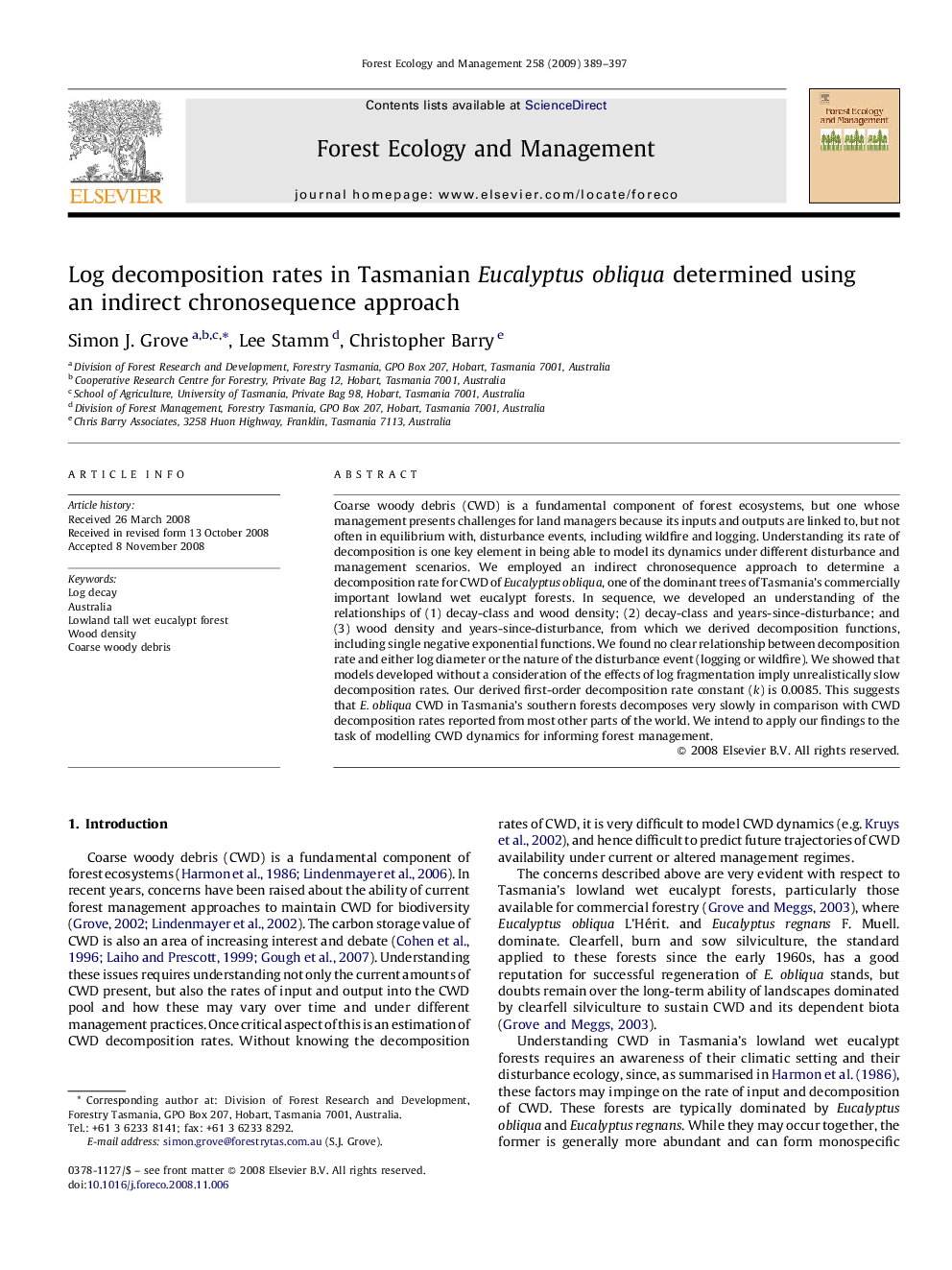| کد مقاله | کد نشریه | سال انتشار | مقاله انگلیسی | نسخه تمام متن |
|---|---|---|---|---|
| 88650 | 159313 | 2009 | 9 صفحه PDF | دانلود رایگان |

Coarse woody debris (CWD) is a fundamental component of forest ecosystems, but one whose management presents challenges for land managers because its inputs and outputs are linked to, but not often in equilibrium with, disturbance events, including wildfire and logging. Understanding its rate of decomposition is one key element in being able to model its dynamics under different disturbance and management scenarios. We employed an indirect chronosequence approach to determine a decomposition rate for CWD of Eucalyptus obliqua, one of the dominant trees of Tasmania's commercially important lowland wet eucalypt forests. In sequence, we developed an understanding of the relationships of (1) decay-class and wood density; (2) decay-class and years-since-disturbance; and (3) wood density and years-since-disturbance, from which we derived decomposition functions, including single negative exponential functions. We found no clear relationship between decomposition rate and either log diameter or the nature of the disturbance event (logging or wildfire). We showed that models developed without a consideration of the effects of log fragmentation imply unrealistically slow decomposition rates. Our derived first-order decomposition rate constant (k) is 0.0085. This suggests that E. obliqua CWD in Tasmania's southern forests decomposes very slowly in comparison with CWD decomposition rates reported from most other parts of the world. We intend to apply our findings to the task of modelling CWD dynamics for informing forest management.
Journal: Forest Ecology and Management - Volume 258, Issue 4, 30 July 2009, Pages 389–397